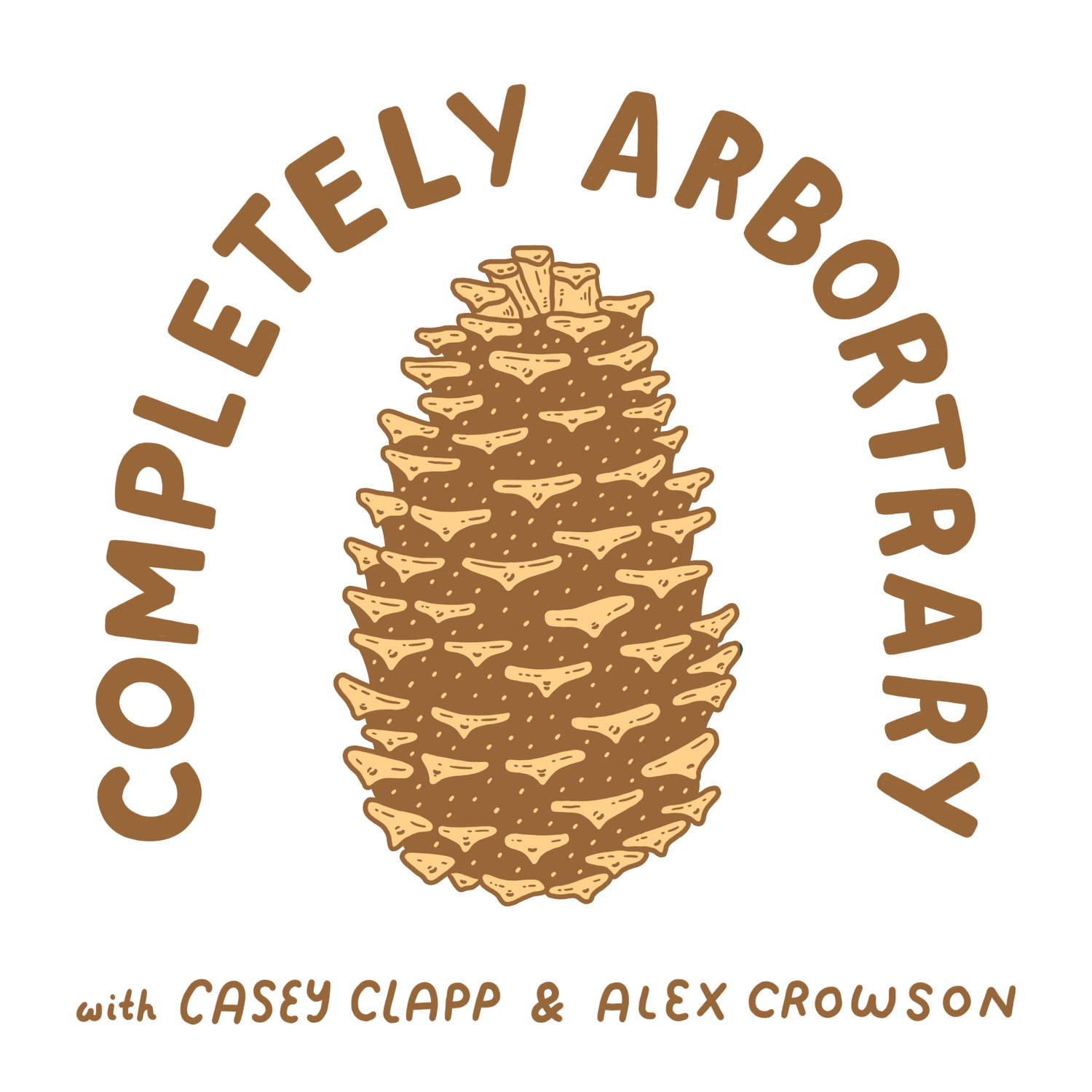TERRIBLE, HORRIBLE, NO GOOD, VERY BAD TREE (ARBORVITAE)
Gather 'round to hear the unfortunate tale of the arborvitae (Thuja occidentalis), a tree that's truly less than the sum of its parts. A mass-produced hedge tree in the cypress family that's exploited on west coast suburban streets, this tree has plenty of faults and makes for good gossip. But can a tree be inherently bad, or is a tree made bad by the people who plant it? Then stick around for our first ever game, Binomial Bonanza!
Arborvitae
(Thuja occidentalis)
There are some trees that have become almost ubiquitous across the American landscape. They seem to make an appearance in every city, town, and wide spot in the road, and are so prevalent that they are spoken of as a given. There’s always going to be red maple being sold at Home Depot; sweetgum will surely be a street tree somewhere nearby; and there will always be a hedge made of arborvitae.
Not to insinuate that it has equal prevalence across the more temperate zones of North America, but I would wager that somewhere along a properly line between two neighbors or right next to the wall of some cookie-cutter building in a business park, a rank of skinny evergreen trees is lined up single-file without even two feet between them. In the pursuit of the Almighty Privacy, or perhaps simply checking the “we planted a tree” box, the American arborvitae (Thuja occidentalis) is often the first, last, and cheapest stop. It’s a tree that is almost unnaturally adept at enabling some of the worst qualities of American culture: an intense need for privacy at the expense of community and the need for everything to be cheap, quick, and industrially repeatable. But how much of this can we actually blame on the tree itself?
Out in the Great Pacific Northwest, arborvitae is a staple plant. You can find it for sale in nearly every garden store and you can undoubtedly find it growing somewhere within every housing development since 1900. But what exactly are we looking at? Usually, one imagines arborvitae growing as a skinny green hedge. It’s a slow growing, evergreen conifer that takes sheering very well, almost like it was designed to grow this way for this purpose! But was it?
Well, as it happens, yes it was. If you sought out arborvitae in its native habitat, you wouldn’t find nice, neat rows of trees cordoning off this meadow from that forest. In fact, you’d probably not even find a tree that resembles what you’d think of as arborvitae. Instead, you’d find heaps of wild, grizzled trees called northern white-cedars.
Now, admittedly, I’m making an arbitrary distinction here (and certainly sowing some confusion).The northern white-cedar and arborvitae are the same plant; the latter is a cultivar of the former. Cultivar is short for ‘cultivated variety’, and a cultivar is simply a unique form of a plant that is propagated artificially in the nursery trade because it has some unique characteristic. In this case, the wild trees (which I am calling northern white-cedars) grow untamed in moist areas of Northeastern North America, and often in extremely harsh areas like cliffsides and rocky outcrops. They form complex canopies, gnarled and sculpted over hundreds of years of intense exposure to wind, rain, sun, and ice.
And then there’s the tamed, broken trees growing along the fence keeping neighbors and prying eyes at bay. This is the suburban arborvitae, a derivative of the wild, ancestral white-cedar that grows upright, has bright green foliage, and does not allow its little branches to stray too far from its central stem. We propagated it by the millions and sent it out to every backyard in America with the promise that it would create a green moat surrounding king and castle. The arborvitae is used to block off my space from yours, to keep the wide world as far away from me as possible when literal distance isn’t feasible. It ends up being a barrier between people and does not often help with community, but instead acts as a wall—literally.
However, this raises the issue that its “unnatural adeptness” is in fact truly and entirely unnatural. So, is it fair to blame the tree? Is it the tree that is enabling us and our insular infatuation, or has the white-cedar simply been co-opted and forced to play its part? It starts to make me wonder: do I actually hate this tree, or do I simply despise the cultural norm it’s been forced to represent?
Completely Arbortrary is produced and hosted by Casey Clapp and Alex Crowson
Support the pod and become a Treemium Member
Follow along on Instagram
Find Arbortrary merch on our store
Cover art by Jillian Barthold
Music by Aves and The Mini-Vandals
Episode cover photo by Joshua Mayer
Additional Reading:
The Arborvitae (Thuja occidentalis)
It’s Carl!
The Exceptional Exception: Manidoo-giizhikens
Some info on the hedgerows of Britain
And a few species that grow out there

